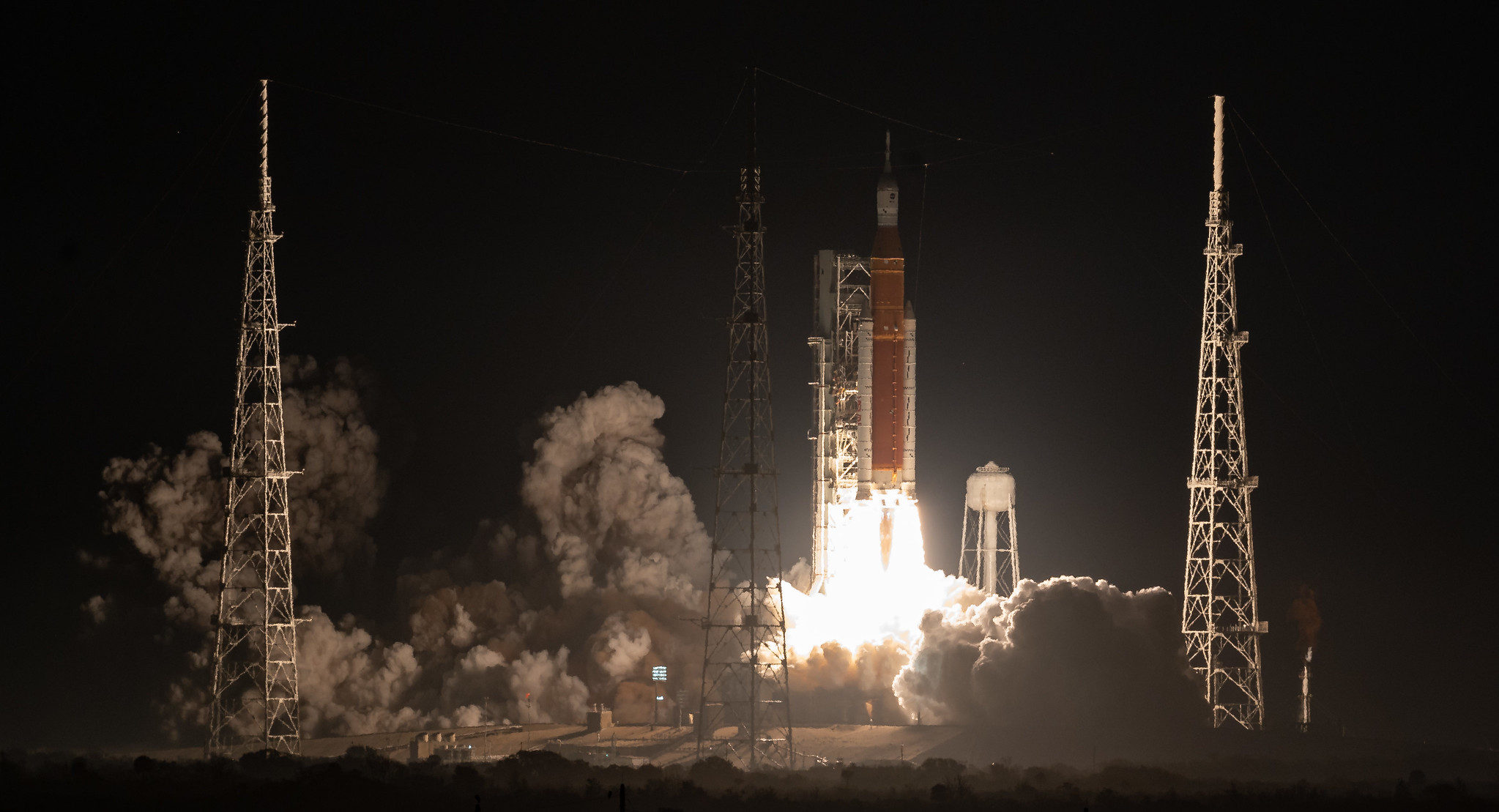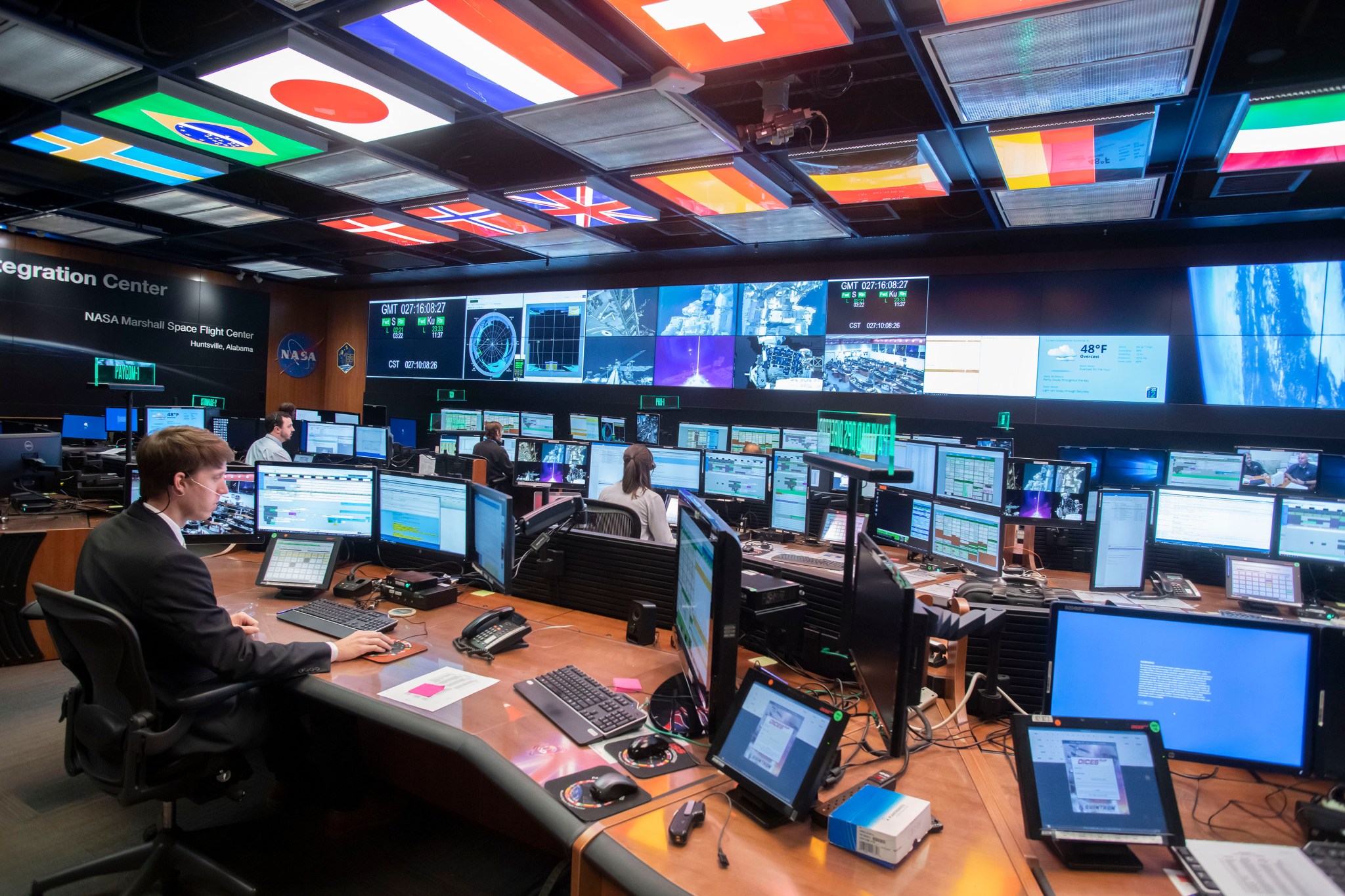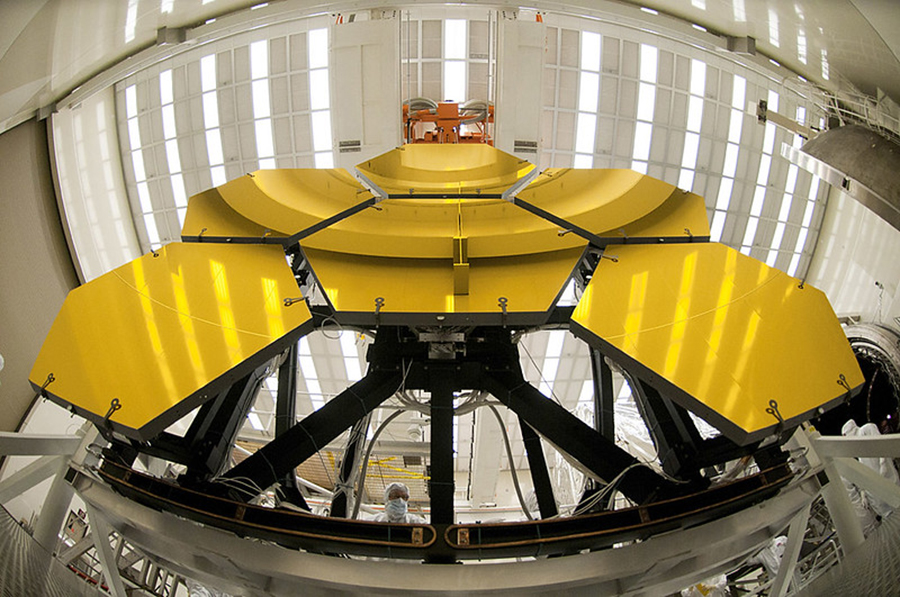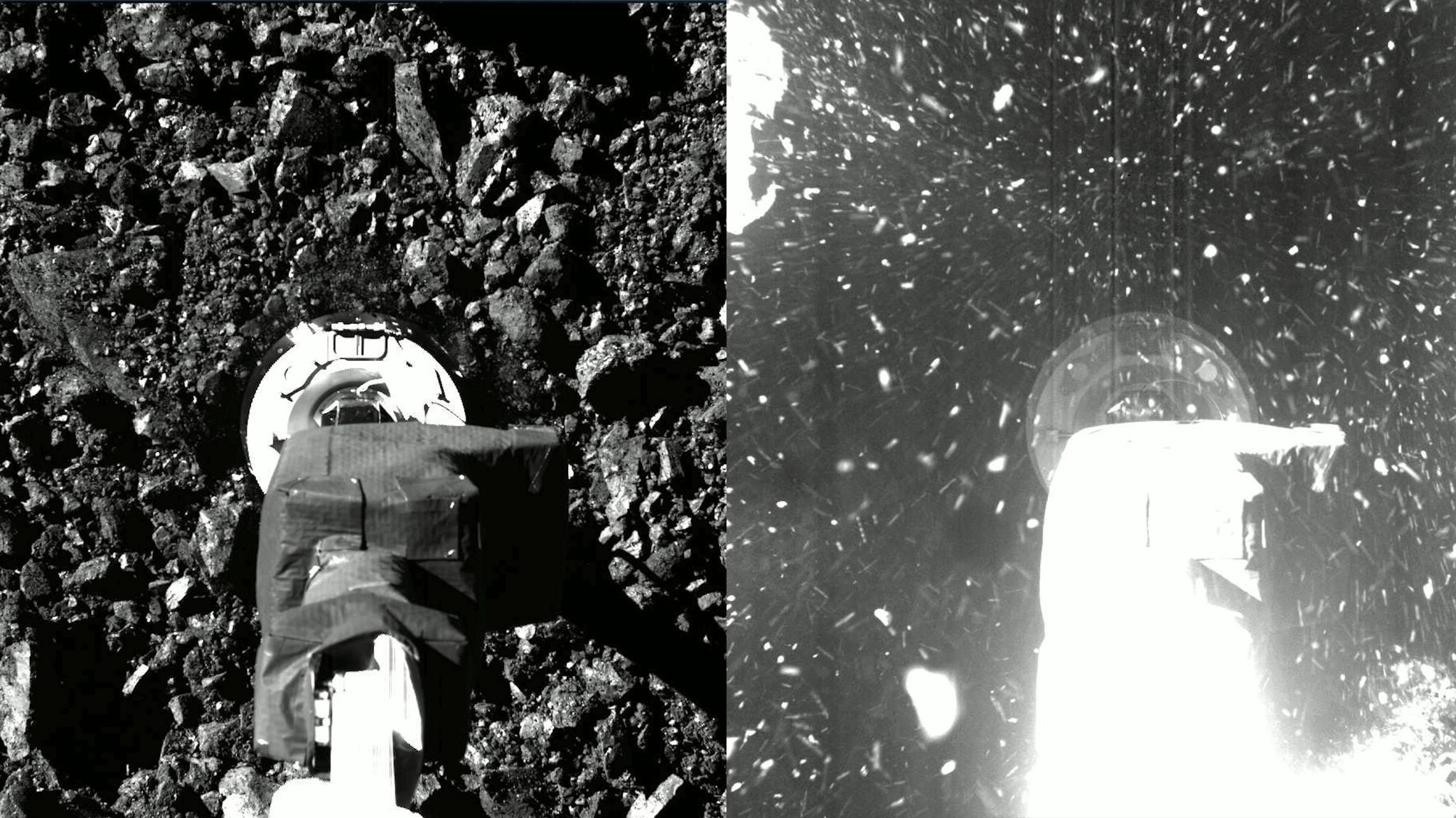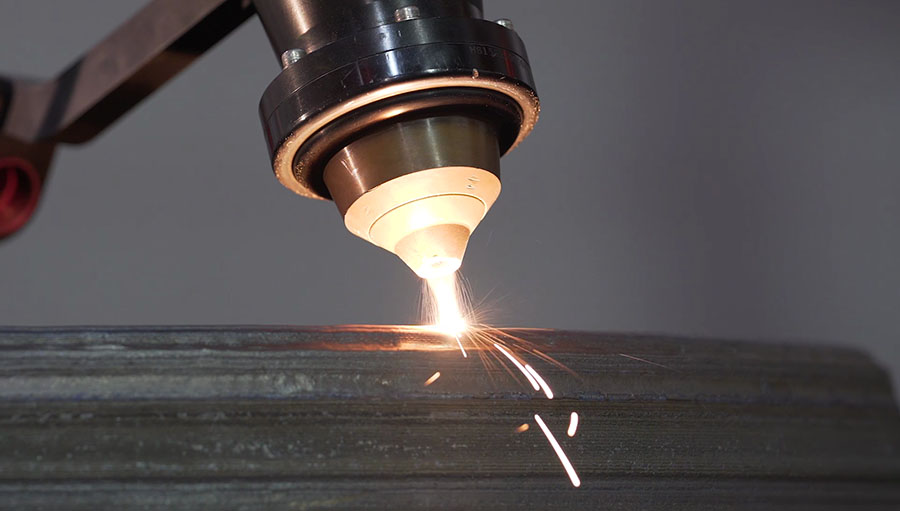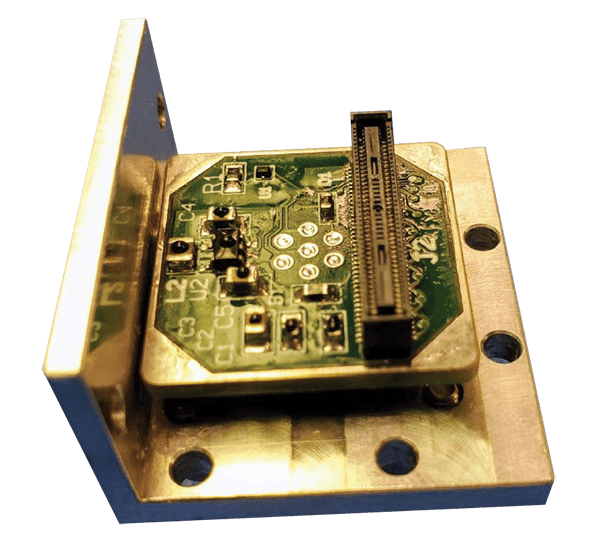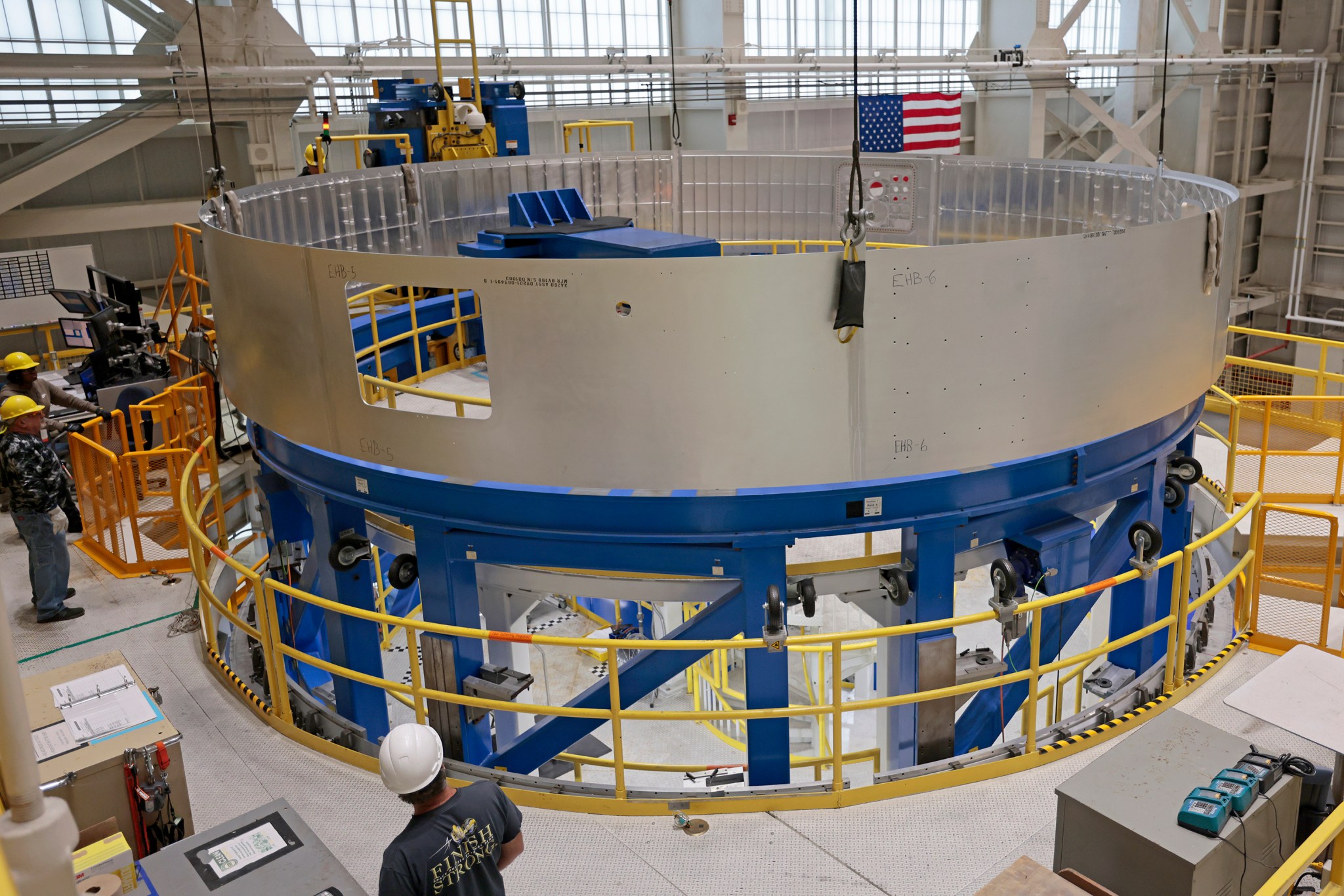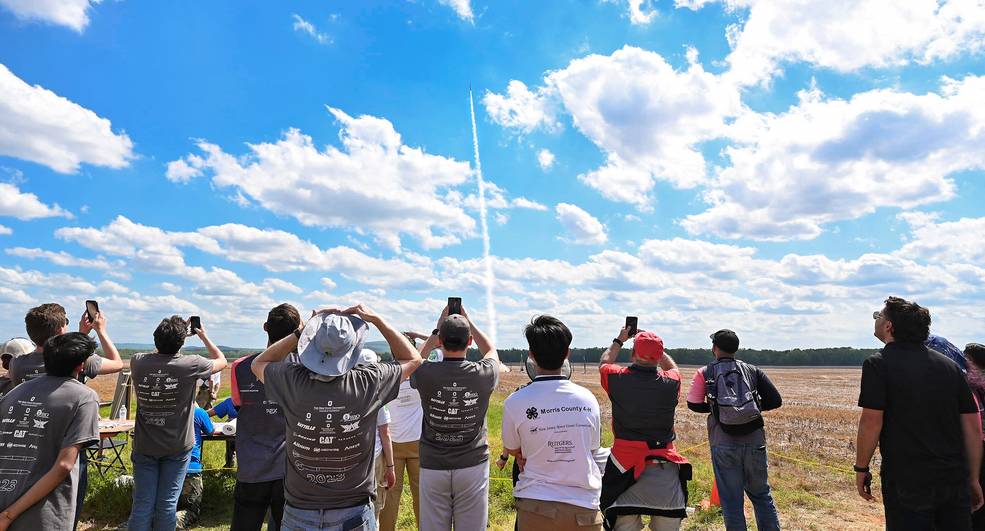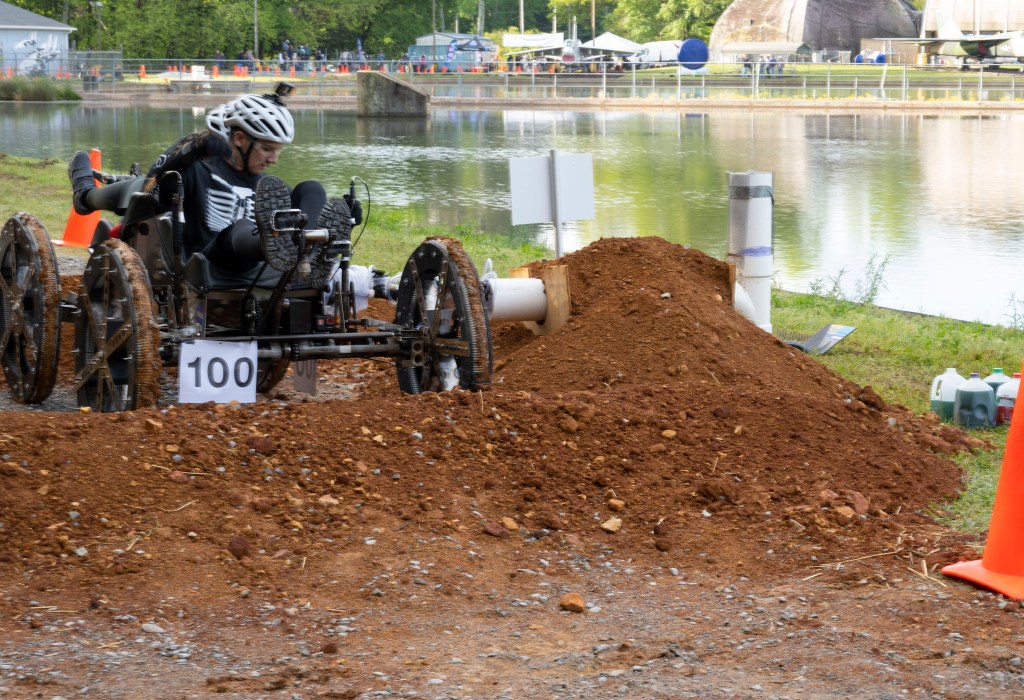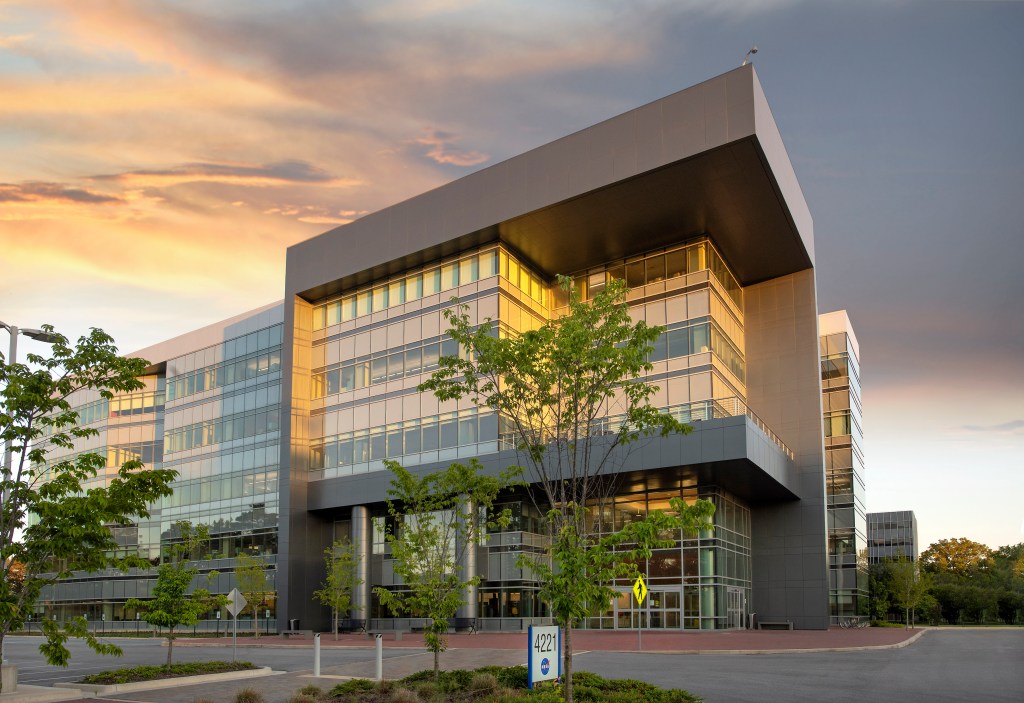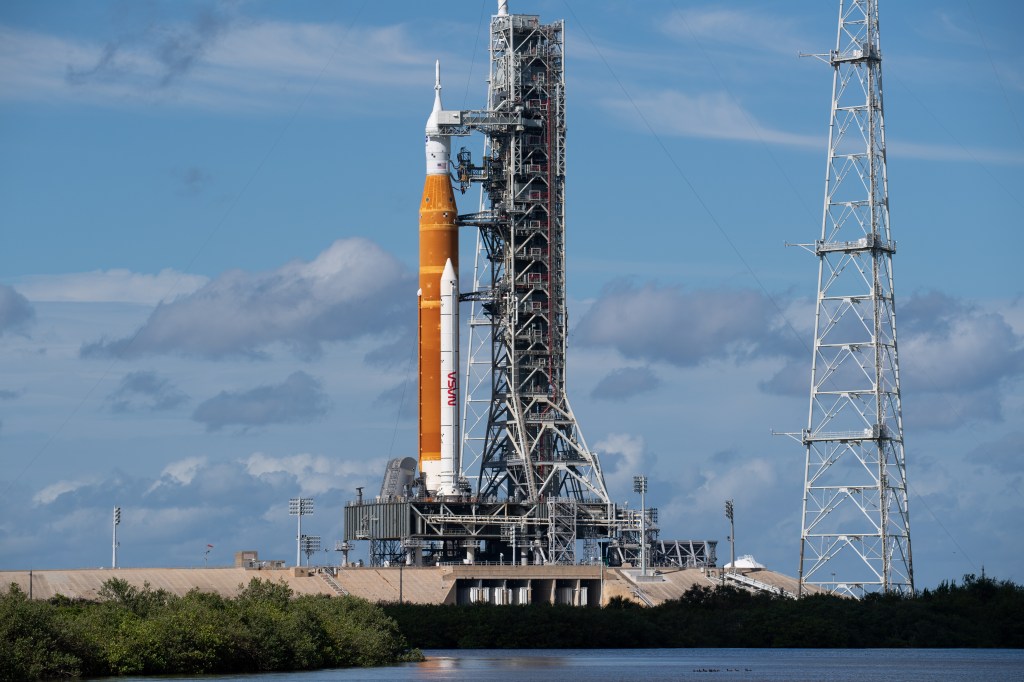Marshall Space Flight Center Fact Sheet
Learn more about the Marshall Space Flight Center in Huntsville, Alabama.
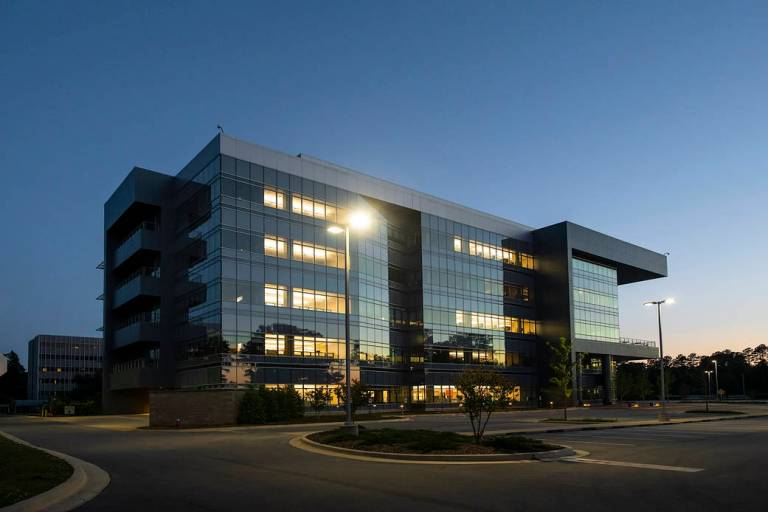
Overview
NASA’s Marshall Space Flight Center in Huntsville, Alabama, provides expertise and capabilities that shape nearly every facet of the nation’s ongoing mission of exploration and discovery. Whether through propulsion systems, space habitats, planetary landers, or cutting-edge science and technology, Marshall is making NASA’s future missions possible.
Founded July 1, 1960, Marshall is one of NASA’s largest field centers, with a workforce of nearly 7,000 employees and an annual budget of approximately $4 billion. The center has played a key role at the agency, from the earliest space launch vehicles and scientific satellites to the groundbreaking Apollo lunar missions and today’s Artemis missions to the Moon and beyond. Marshall, along with government and industry partners, solves spaceflight’s most complex, technical challenges and contributes to science that improves life and protects resources across the world. Marshall’s unique capabilities and facilities will enable future partnerships that are valuable to NASA, the community, and the nation’s space exploration program.
The Moon and Mars: Marshall’s Role in Artemis
Marshall is leading the way in supporting NASA’s Artemis missions, which will land the first woman and the first person of color on the lunar surface in preparation for more advanced missions to Mars. Following the successful launch and first flight of the Space Launch System rocket for the Artemis I mission in 2022, Marshall teams are preparing for the first crewed flights of SLS – Artemis II and III. Work is also underway on the next configuration of the SLS rocket, which will feature a more powerful upper stage, beginning with Artemis IV.
SLS and the Orion spacecraft, Human Landing System, and Gateway, which will orbit around the Moon, are the foundation for NASA’s deep space exploration plans, and Marshall plays a key role in each.
SLS is the only rocket capable of sending astronauts aboard the Orion and large cargo to the Moon in a single launch. Marshall is responsible for the design, development, testing, and manufacturing of the mega rocket. More than 1,000 companies in 44 states contribute to the rocket’s development.
SLS is designed to send more payload to the Moon than any existing rocket to help NASA establish a long-term presence to prepare for human missions to Mars. SLS rockets for future Artemis missions are currently being manufactured at NASA’s Michoud Assembly Facility in New Orleans, which Marshall manages. The rocket’s flexible, evolvable design will open new possibilities for payloads, including scientific missions to deep space destinations.
Marshall also leads NASA’s Human Landing System Program, working with American companies on the development, testing, and delivery of human-rated landers to ferry astronauts to the lunar surface. The HLS team is working closely with its commercial providers to design and build innovative, technically advanced, next-generation human landing systems, leveraging decades of human spaceflight experience at the speed of the commercial sector. Regularly sending astronauts to the surface of the Moon will enable science investigations and the development of new technologies all in preparation to send astronauts to Mars in years to come.
Additionally, Marshall provides systems engineering, research, and subject matter expertise for the lunar Gateway, a unique, long-term orbital platform for scientific research, technology demonstrations, and dispatching human landers to the surface. The center leads NASA’s formulation and development of future exploration habitats, including planned lunar surface and Mars transit habitats that will support long-duration stays on the Moon and eventual human missions to Mars.
The Huntsville Operations Support Center
The Huntsville Operations Support Center (HOSC) at Marshall is a state-of-the-art, multi-tenant facility that provides engineering and mission operations support for NASA’s Commercial Crew Program, SLS rocket, and Artemis lunar science missions, and it is the heart of the science conducted on the International Space Station, providing the planning, testing, and launch operations essential for successful missions. The HOSC provides a range of services that are essential for successful crewed and uncrewed missions – backed by the research, experience, and expertise that are unique to NASA.
The International Space Station is a unique, Earth-orbiting laboratory where NASA’s commercial and international research partners pool their talents on innovative science experiments – including human biology and physiology studies crucial to preparing for long-duration stays at the Moon and missions to Mars.
Within the HOSC, Marshall supports the space station 24 hours a day, 365 days a year, through its Payload Operations Integration Center. Team members coordinate and integrate all station science, commercial experiments, and Earth-to-station science communications. The payload operations team partners with control centers and science partners worldwide to plan and monitor science activities, downlink data, and manage the use of in-orbit resources.
Station hardware designed, built, and managed by Marshall includes the Environmental Control and Life Support System, Materials Science Research Rack, Microgravity Science Glovebox and Life Sciences Glovebox, and “Expedite the Processing of Experiments to the Space Station,” or EXPRESS Racks. Each contributes valuable data and state-of-the-art life support for the space station, paving the way for Artemis and future long-duration missions. For example, the Environmental Control and Life Support System provides clean air and water to the space station crew and laboratory animals through artificial means. The system allows for the accommodation of multiple crews, helping to extend the time crews can stay in space.
Science to Understand Earth and Beyond
Marshall is paving the way for a deeper understanding of our solar system and Earth. Marshall scientists conduct a wide spectrum of space science research to better understand the universe and to unlock scientific mysteries that will improve and protect life on Earth and keep space crews safe as they travel in space, explore the Moon, and journey deeper than ever before into the solar system. This is clear with Marshall’s work with NASA’s great observatories.
Marshall contributed to the development of the James Webb Space Telescope, which is managed by NASA’s Goddard Space Flight Center in Greenbelt, Maryland. Marshall’s work on the mission spans more than two decades and primarily focused on development and testing of the mirrors in the extreme cold temperatures at which Webb operates. Webb is the most complex telescope ever built and will serve as the premier space observatory of the next decade, studying every phase in the history of the universe. Marshall also monitors the meteoroid environment around Webb and provides regular meteoroid forecasts to the Webb team. The telescope is looking at the universe like never before and is generating incredible discoveries about planets, stars, galaxies, and other celestial objects. One of its most recent findings were inner dust belts circling the young hot star Fomalhaut, which had never been seen before and were revealed by Webb for the first time.
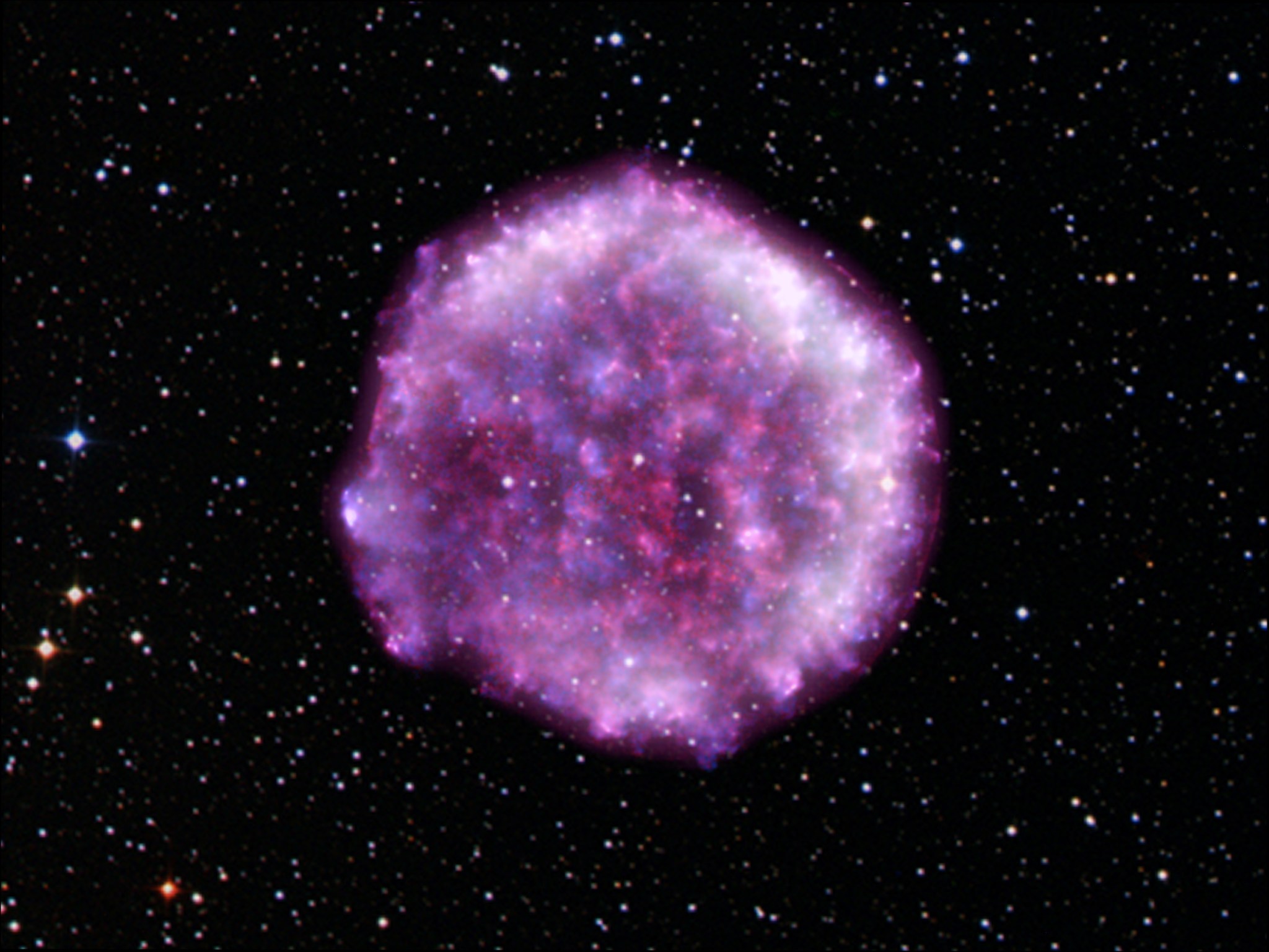
The Hubble Space Telescope is a large, space-based observatory, which has revolutionized astronomy since its launch and deployment by the space shuttle Discovery in 1990. Marshall was the lead field center for the design, development, and construction of the space telescope. Marshall also designed, developed, built, and continues to support NASA’s Chandra X-ray Observatory, the world’s most powerful X-ray telescope. Since its launch in 1999, Chandra has rewritten textbooks with discoveries about our solar system and images of celestial objects billions of light-years away. That work continues with NASA’s newest X-ray mission, the Imaging X-ray Polarimetry Explorer, which measures X-ray polarization from a variety of sources, from black holes to exploded stars, deepening human understanding about the nature of these mysterious objects and the cosmos itself. IXPE is playing a key role in helping understand the timescale on which the black hole nearest to Earth, Sagittarius A, is changing. Marshall is also responsible for one of the instruments on the Fermi Gamma-ray Space Telescope – the Gamma-ray Burst Monitor, or GBM. The GBM studies gamma-ray bursts, the most powerful explosions in the universe, as well as other flashes of gamma rays. The GBM sees these bursts across the entire sky, and scientists are using its observations to learn more about the universe.
Marshall physicists and engineers not only devise instruments to study faraway stars, but also design instruments and fly and operate missions – Hinode, CLASP, MaGIXS, and SPoRT – that help us learn more about the Sun and space weather.
As home of NASA’s Planetary Missions Program Office – which oversees the Discovery, New Frontiers, and Solar System Exploration programs – Marshall manages the business and administrative needs for several highly focused science investigation missions. The office works closely with other NASA centers, academia, and science institutions on missions including Lucy, Psyche, OSIRIS-Rex, Europa Clipper, and DART.
Earth scientists at Marshall also pursue a variety of missions to safeguard our home planet and our future, bringing together technology, science, and global Earth observations to advance knowledge of the planet’s complex ecosystem and to tackle challenges such as climate change, weather prediction, disaster response, and big data management. These scientists use satellite remote sensing data to map impacts of disaster events, including water change following a major flood, or damage to buildings following events like earthquakes and hurricanes. Mapping these events can help emergency managers understand the scope and scale of a disaster to help them respond to those affected.
Developed and managed by Marshall scientists, SERVIR connects Earth to space in a very real way by helping developing countries use satellite data to address critical challenges in food security, water resources, weather and climate, land use, and disasters. A partnership of NASA, the U.S. Agency for International Development, and other organizations, SERVIR develops innovative solutions to improve livelihoods and foster self-reliance in Asia, Africa, and the Americas.
The NASA Short-term Prediction Research and Transition, or SPoRT, center works to put Earth observations and research capabilities into the hands of the operational weather community to improve short-term forecasts at regional and local levels. Marshall is expanding the use of Earth observations through innovation, partnerships, and technology. The IMPACT program explores new strategies to meet the growing data needs of the modern research community and to maximize NASA’s science return. Marshall’s data science expertise is expanding open science through innovation, partnerships and technology, and prototyping the latest technologies, such as VEDA, to support new science and applications from Earth observation data.
Marshall continues to develop new ways to study Earth’s energy and water cycles and associated weather systems using NASA’s fleet of Earth science satellites, including Marshall’s Lightning Imaging Sensor on the space station. Other sensors include the Advanced Microwave Precipitation Radiometer (AMPR) and Lighting Instrument Package (LIP) that monitor lightning day and night, lending deeper understanding to severe weather conditions around the world.
Engineering the Future
Marshall engineers and their external partners are leading development of advanced technologies and materials and integrated, sustainable solutions to benefit NASA, industry, academia, and government.
Engineers and technologists at Marshall lead metal additive manufacturing, or 3D printing, developments for propulsion applications to mature processes. They use novel materials to support a robust supply chain and provide high performance solutions for NASA and commercial missions. Marshall is also developing 3D-printing technologies to deploy in space for manufacturing and repair of electronics. The technologies utilize digital design tools that enable rapid prototypes and circuits with complex geometries not easily achievable using traditional processes – techniques key to fabricating and maintaining electronics during long-term human-rated missions in space.
Marshall has capabilities for the entire design, analysis, manufacturing, hot fire testing, and certification lifecycle of complex additively manufactured propulsion components and engine systems to enable high performance for NASA, government, and commercial space missions. The center’s dedication to establishing mutually rewarding public-private partnerships with industry and academic partners enables cost sharing collaborations that significantly advance U.S. additive and novel manufacturing.
Technology Partnerships
Achieving our mission relies on mutually rewarding partnerships with commercial industry and international partners – unifying nations and creating new economic opportunities. Leveraging Marshall’s unique resources and legacy of experience, Marshall’s Small Business Innovation Research Program and Small Business Technology Transfer Program have contributed to technologies that make drinking water available and affordable, improve wound healing and chronic pain relief, provide artificial intelligence-based technology, and improve educational and mentoring programs.
Marshall’s Moon-to-Mars Planetary Autonomous Construction Technology project or MMPACT is working with commercial partners and academia to develop and test robotic technology that will one day use regolith or lunar soil, to build structures using 3D-printed technology on the Moon. MMPACT team members are developing ways to use directed energy methods, such as microwave and laser technology, to make structural elements from lunar regolith which can be used for constructing buildings, roads, and landing pads on the Moon’s surface. NASA’s primary partner, ICON Technologies, is already building 3D-printed homes here on Earth.
Thousands of technologies and applications that save and improve lives have been derived from NASA research and exploration missions, including advanced breast cancer imaging systems, heart pumps, biohazard detectors, and more. NASA’s Technology Transfer Program licenses with industry partners to spinoff space technology and adapt it for new applications. The program also ensures innovations developed for exploration and discovery are broadly available to the public, maximizing the benefit to the nation.
The Technology Demonstration Missions Program, managed at Marshall, is responsible for technology demonstrations that develop new crosscutting space technologies ready for rapid infusion into future space missions. These technologies drive exploration, potentially transforming the way humans live and work in space and travel to and from destinations across the solar system.
NASA’s Centennial Challenges, also managed at Marshall, aim to directly engage the public in the process of advanced technology development, offering incentive prizes to generate revolutionary solutions to problems of interest to NASA and the nation. The program seeks innovations from diverse and nontraditional sources, while stimulating innovation in basic and applied research, technology development, and prototype demonstrations that have the potential for application for NASA.
Michoud Assembly Facility
Marshall manages NASA’s Michoud Assembly Facility in New Orleans, where the agency manufactured some of the largest elements of the SLS and Orion crew spacecraft for the Artemis missions. Elements for future Artemis missions are currently in production at Michoud, along with the Orion crew modules and Exploration Upper Stage hardware. For more than 60 years, Michoud has served as the agency’s home for building and delivering large-scale space structures and systems and has supported all NASA human spaceflight missions. With 43 acres of manufacturing space under one roof, Michoud is one of the largest such facilities in the world, earning its title as “America’s Rocket Factory.”
Michoud offers state-of-the-art manufacturing, fabrication, and welding capabilities, and is home to the National Center for Advanced Manufacturing, a partnership with the state of Louisiana, Louisiana State University in Baton Rouge, and the University of New Orleans. More than 3,000 people are employed on-site, including government and contractor employees and commercial tenants.
Engaging NASA’s Next Generation
Marshall and NASA’s Office of STEM Engagement encourage student interest and involvement in STEM opportunities, degrees, and careers to maintain a diverse, skilled workforce to carry forward our nation’s missions and work in aeronautics, science, and space exploration. NASA Marshall engages students, educators, and institutions through four projects:
- Next Gen STEM reaching K-12, formal and informal educators.
- Minority University Research and Education Project (MUREP) engages underrepresented populations through several initiatives.
- Space Grant consortia through affiliates in all 50 states, the District of Columbia, and the Commonwealth of Puerto Rico.
- Established Program to Stimulate Competitive Research designed to enhance the capabilities of designated states and territories and nationally competitive energy-related research.
Through these efforts, and in partnership with mission directorates and the center, Marshall engages students in internships, educator professional development, and student challenges.
Marshall manages two of NASA’s nine Artemis Student Challenges – Student Launch and the Human Exploration Rover Challenge – and other NASA education activities to engage and inspire new generations in the fields of science, technology, engineering, and mathematics.
Thousands of students worldwide have competed in the Human Exploration Rover Challenge, which challenges teams of high school and college students to create human-powered rovers capable of traversing the simulated surfaces of other worlds. The Student Launch rocketry challenge tasks American students to design, build, test, and fly high-powered, amateur rockets carrying scientific or engineering payloads.
These initiatives provide authentic, hands-on experiences for students to imagine and develop innovative technologies and skills which could be used to continue NASA’s complex missions of science and discovery.
https://www.nasa.gov/stem/studentlaunch/home/index.html
For more information about Marshall, visit:
To learn more about the Artemis program, visit:



























